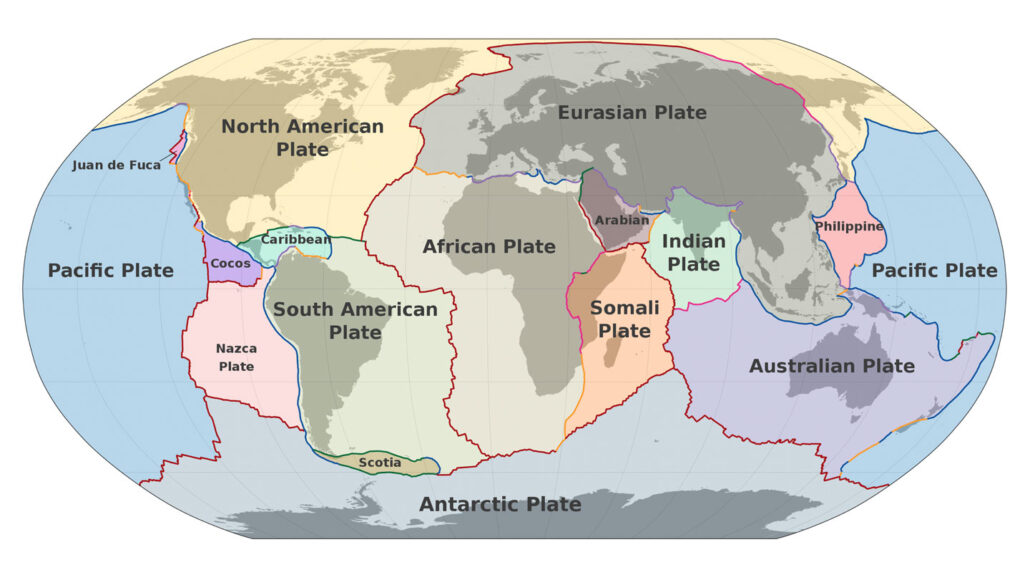continent: (in geology) The huge land masses that sit upon tectonic plates. In modern times, there are six established geologic continents: North America, South America, Eurasia, Africa, Australia and Antarctica. In 2017, scientists also made the case for yet another: Zealandia.
earthquake: A sudden and sometimes violent shaking of the ground, sometimes causing great destruction, as a result of movements within Earth’s crust or of volcanic action.
landmass: A continent, large island or other continuous body of land.
lithosphere: The upper layer of Earth, which includes its thin brittle crust and upper mantle. The lithosphere is relatively rigid and is broken into slowly moving tectonic plates.
mantle: (in geology) The thick layer of the Earth beneath its outer crust. The mantle is semi-solid and generally divided into an upper and lower mantle.
molten: A word describing something that is melted, such as the liquid rock that makes up lava.
Pangaea: (or Pangea) A supercontinent that existed from about 300 to 200 million years ago. It was composed of all of the major continents seen today, squished together.
tectonic: Surface activity on a large rocky body (such as a planet or moon) as liquid rock flows up to the surface where it solidifies, then slowly drifts atop molten rock, carrying surface features with it.
tectonic plates: The gigantic slabs — some spanning thousands of kilometers (or miles) across — that make up Earth’s outer layer.
volcano: A place on Earth’s crust that opens, allowing magma and gases to spew out from underground reservoirs of molten material. The magma rises through a system of pipes or channels, sometimes spending time in chambers where it bubbles with gas and undergoes chemical transformations. This plumbing system can become more complex over time. This can result in a change, over time, to the chemical composition of the lava as well. The surface around a volcano’s opening can grow into a mound or cone shape as successive eruptions send more lava onto the surface, where it cools into hard rock.

